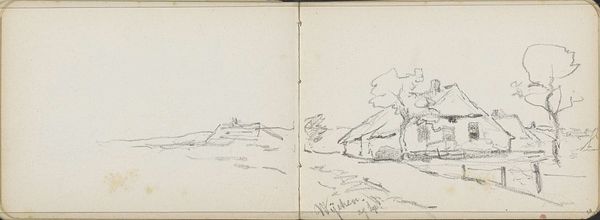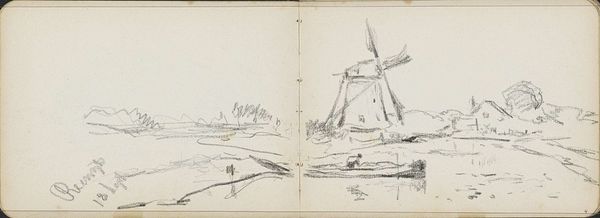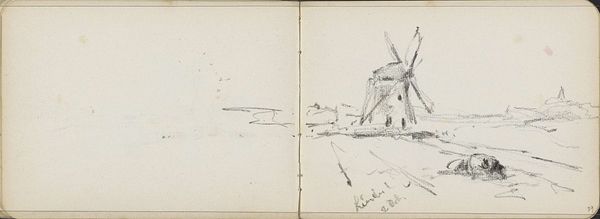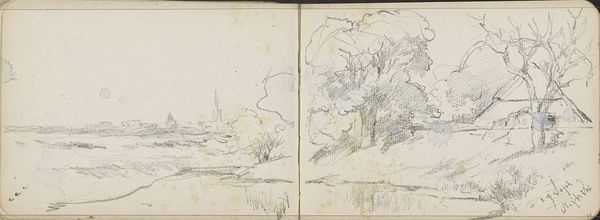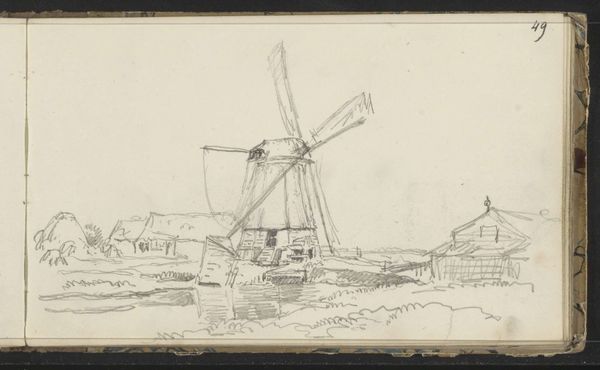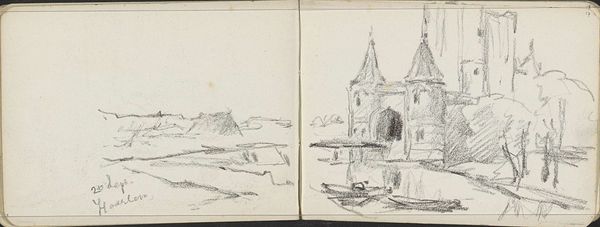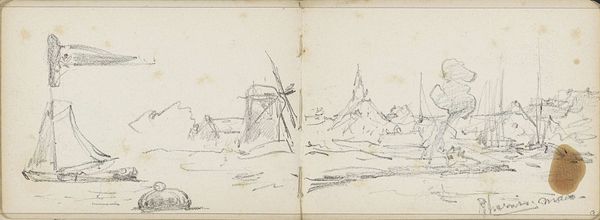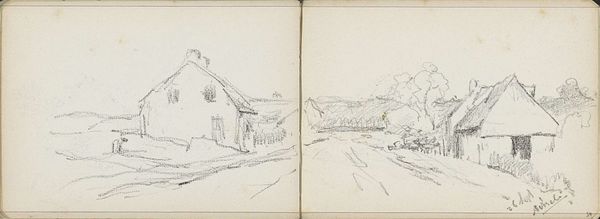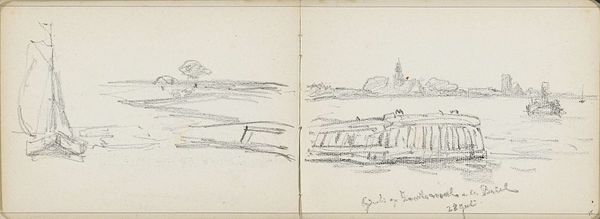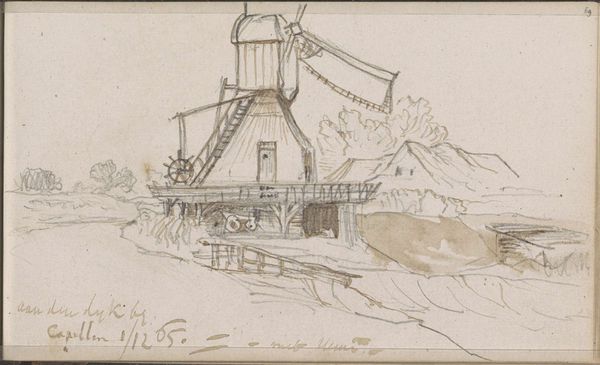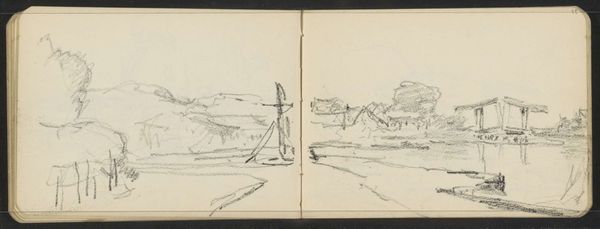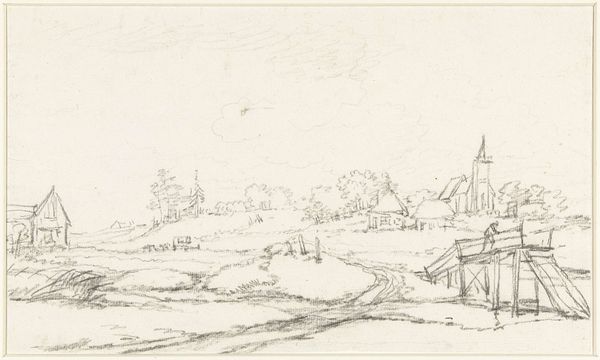
Copyright: Rijks Museum: Open Domain
Willem Cornelis Rip created this sketch of a windmill at Herpen in the Netherlands, sometime in the late 19th or early 20th century, using graphite on paper. Rip was part of a generation of Dutch artists who turned away from grand historical narratives and towards more intimate, local scenes. This sketch captures a common sight in the Dutch landscape: the windmill, a symbol of the nation’s ingenuity in managing water and harnessing natural resources. The Netherlands had a strong tradition of landscape painting, and artists like Rip often worked en plein air, directly observing and sketching the world around them. Understanding this work requires us to investigate the social and economic importance of windmills in Dutch history, and to consider how they shaped the physical and cultural landscape. Art historians might consult local archives, engineering treatises, and period photographs to better understand this relationship between art and industry. Ultimately, this sketch reminds us that even the most seemingly straightforward images are embedded in complex social and institutional contexts.
Comments
No comments
Be the first to comment and join the conversation on the ultimate creative platform.
